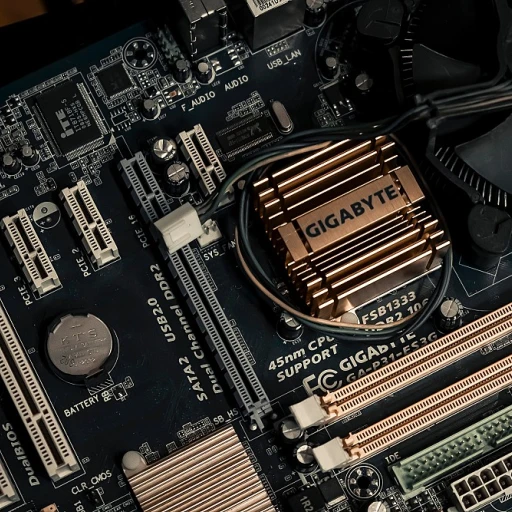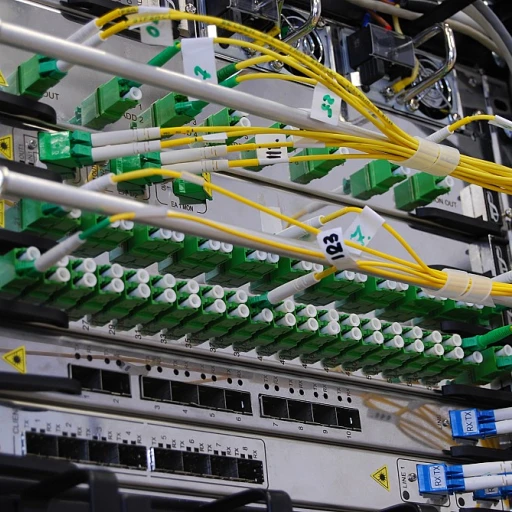
The Role of Software in Modern Railway Systems
Integrating Software into Railway Systems
In the modern era, the integration of software into railway systems has become a cornerstone for enhancing operational efficiency and safety. The role of software in these systems is multifaceted, encompassing everything from asset management to real-time tracking and predictive maintenance. As rail operators strive to maximize the performance of their rail networks, software solutions like Zedas Asset and Asset Infinity are becoming indispensable tools.
Software systems are pivotal in managing railway infrastructure, providing a comprehensive overview of asset conditions and facilitating maintenance planning. By leveraging big data and IoT technologies, these systems enable rail operators to monitor the health of their assets in real time, ensuring timely interventions and reducing downtime. This proactive approach not only improves asset performance but also enhances the overall safety of railway operations.
Moreover, the integration of management software into railway systems supports the seamless coordination of various operational aspects. From asset tracking to maintenance management, software solutions streamline processes, allowing for more efficient use of resources and better decision-making. As discussed in the cyber security quiz, understanding the security implications of these technologies is also crucial to safeguarding sensitive data and maintaining system integrity.
As we delve deeper into the future of railway asset management, it becomes clear that software will continue to play a key role in driving innovation and efficiency across the industry. By embracing these technological advancements, rail operators can ensure their systems remain at the forefront of operational excellence.
Predictive Maintenance and Its Impact on Asset Utilization
Enhancing Asset Utilization Through Predictive Maintenance
In the realm of railway asset management, predictive maintenance has emerged as a pivotal strategy for optimizing asset utilization and ensuring operational efficiency. By leveraging advanced software solutions, rail operators can transition from traditional maintenance schedules to a more dynamic, condition-based approach. This shift not only enhances the performance of rail infrastructure but also significantly reduces downtime and maintenance costs.
Predictive maintenance relies heavily on the integration of IoT devices and real-time data analytics. These technologies enable continuous monitoring of railway assets, providing insights into their current condition and predicting potential failures before they occur. For instance, systems like Zedas Asset and Asset Infinity offer comprehensive asset tracking and management capabilities, allowing for timely interventions and maintenance planning.
One of the key benefits of predictive maintenance is its impact on safety and reliability. By identifying issues early, rail operators can address them proactively, minimizing the risk of unexpected breakdowns and enhancing the overall safety of rail networks. This approach also supports the sustainability of railway infrastructure by extending the lifespan of assets through timely maintenance interventions.
However, implementing predictive maintenance requires overcoming several challenges, including the integration of disparate data sources and the need for advanced data analytics capabilities. As discussed in other sections, the role of AI and machine learning is crucial in processing big data and driving informed decision-making in maintenance management.
For those interested in exploring how predictive maintenance is revolutionizing customer interaction and operational efficiency, further insights can be found in our article on revolutionizing customer interaction with advanced contact center solutions.
Data Analytics: Driving Informed Decision-Making
Leveraging Data for Strategic Insights
In the realm of railway asset management, data analytics has emerged as a pivotal tool for enhancing operational efficiency and safety. By harnessing the power of big data, rail operators can gain a comprehensive understanding of their assets' performance and condition. This enables more informed decision-making, ultimately leading to improved asset utilization and reduced maintenance costs.
Data analytics systems are capable of processing vast amounts of information in real time, providing key insights into the health of rail infrastructure. This is crucial for effective maintenance planning and asset tracking. With the integration of IoT devices, data from various sources can be collected and analyzed to predict potential failures before they occur, thus supporting predictive maintenance strategies.
Management software solutions like Zedas and Asset Infinity are instrumental in transforming raw data into actionable intelligence. These systems offer advanced analytics capabilities that help rail operators monitor asset performance and optimize maintenance schedules. By doing so, they not only enhance the safety and reliability of railway operations but also contribute to the longevity of the assets.
Moreover, the use of data analytics in railway systems facilitates better resource allocation and risk management. By understanding the condition and performance of assets, rail networks can prioritize maintenance activities, ensuring that critical infrastructure remains operational and safe. This strategic approach to asset management is essential for maintaining the integrity of railway infrastructure and supporting the overall efficiency of rail operations.
AI and Machine Learning in Railway Operations
Harnessing AI and Machine Learning for Enhanced Railway Operations
In the realm of modern railway systems, the integration of AI and machine learning is revolutionizing operations. These technologies are pivotal in enhancing the efficiency and safety of rail networks. By leveraging AI, rail operators can optimize asset management, ensuring that maintenance is not only reactive but predictive, aligning with the broader goals of predictive maintenance.
AI systems analyze vast amounts of data collected from IoT devices and sensors embedded in railway infrastructure. This data-driven approach allows for real-time tracking of asset conditions, enabling timely interventions that prevent failures and reduce downtime. The ability to predict when an asset might fail or require maintenance is a game-changer for rail asset management, significantly improving asset performance and operational efficiency.
Improving Safety and Performance with AI
Safety is a key concern in railway operations, and AI plays a crucial role in enhancing it. Machine learning algorithms can detect anomalies in rail systems, alerting operators to potential safety hazards before they escalate. This proactive approach not only safeguards passengers and assets but also optimizes the performance of rail infrastructure.
Furthermore, AI-driven systems facilitate better maintenance planning by analyzing historical data and predicting future maintenance needs. This ensures that maintenance management is both efficient and cost-effective, aligning with the strategic goals of railway asset management. Companies like Hitachi Rail are at the forefront of integrating AI into their systems, setting benchmarks for the industry.
Challenges and Opportunities
Despite the clear benefits, implementing AI and machine learning in railway operations is not without challenges. Rail operators must navigate issues related to data privacy, integration with existing systems, and the need for skilled personnel to manage these advanced technologies. However, the potential for improved asset tracking, enhanced safety, and increased operational efficiency makes overcoming these challenges worthwhile.
As the industry continues to evolve, the role of AI and machine learning in railway operations will undoubtedly expand, offering new opportunities for innovation and growth in rail asset management.
Challenges in Implementing Advanced Software Solutions
Overcoming Barriers in Advanced Software Integration
Implementing advanced software solutions in railway asset management presents several challenges that rail operators must navigate to enhance operational efficiency. One of the primary hurdles is the integration of new systems with existing railway infrastructure. Legacy systems often lack the flexibility required to seamlessly incorporate modern technologies, such as IoT and predictive maintenance tools, which are crucial for real-time asset tracking and condition monitoring.
Another significant challenge is data management. With the proliferation of big data, rail networks must develop robust data analytics capabilities to process and analyze vast amounts of information. This is essential for informed decision-making and optimizing asset performance. However, the complexity of managing such data can be daunting, requiring sophisticated management software and skilled personnel to ensure data integrity and security.
Moreover, the implementation of AI and machine learning in railway operations demands a shift in workforce skills. Rail operators need to invest in training programs to equip their teams with the necessary expertise to leverage these technologies effectively. This transition can be resource-intensive and time-consuming, but it is vital for maximizing the benefits of advanced software solutions.
Safety and regulatory compliance also pose challenges. As new technologies are integrated into railway systems, ensuring they meet stringent safety standards and regulatory requirements is critical. This necessitates continuous monitoring and updates to both software and operational protocols to maintain compliance and ensure the safety of rail assets and infrastructure.
Finally, cost considerations cannot be overlooked. The initial investment in advanced software solutions, such as those offered by Zedas and Asset Infinity, can be substantial. Rail operators must carefully evaluate the long-term benefits and potential return on investment to justify these expenditures. Strategic planning and maintenance management are key to overcoming these financial barriers and achieving sustainable improvements in asset management.
Future Trends in Railway Asset Management Software
Emerging Technologies Shaping the Future
The future of railway asset management software is poised for transformation with the integration of emerging technologies. As rail operators strive for enhanced operational efficiency, the adoption of IoT and real-time data tracking systems will be pivotal. These technologies enable precise asset tracking and condition monitoring, ensuring that maintenance management is both proactive and predictive.
Integration of Big Data and Analytics
Big data analytics will continue to play a crucial role in optimizing asset performance. By leveraging vast amounts of data collected from various sources, rail networks can enhance their maintenance planning and improve asset utilization. This data-driven approach not only supports informed decision-making but also enhances the overall safety and reliability of railway infrastructure.
AI and Machine Learning: The Next Frontier
AI and machine learning are set to revolutionize railway operations by providing advanced insights into asset conditions and performance. These technologies will enable systems to predict potential failures and optimize maintenance schedules, thereby reducing downtime and improving asset longevity. As AI continues to evolve, its integration into railway systems will become a key factor in achieving superior asset management.
Challenges and Opportunities Ahead
While the potential of advanced software solutions is immense, challenges remain in their implementation. Rail operators must navigate issues related to data integration, system interoperability, and cybersecurity. However, these challenges also present opportunities for innovation and collaboration among stakeholders, paving the way for more robust and efficient railway systems.
Conclusion: A Future of Enhanced Efficiency
As the railway industry embraces these technological advancements, the future of asset management looks promising. By harnessing the power of IoT, big data, AI, and predictive maintenance, rail operators can achieve unprecedented levels of efficiency and performance. The journey towards a more connected and intelligent railway infrastructure is well underway, promising a future where safety, reliability, and operational excellence are the norm.















